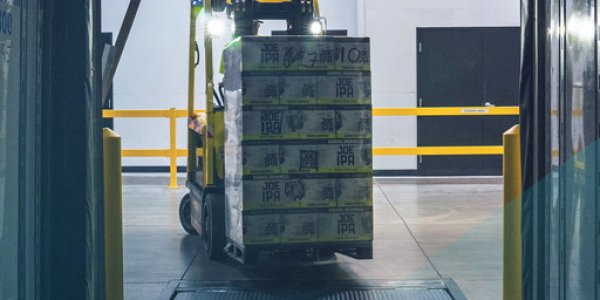Never before have end consumers had such high expectations of parcel shipping as they do today. Maximum flexibility and transparency along the supply chain, including desired delivery time and drop-off location, are now almost standard, at least in the B2C business. In the B2B sector, too, the need for digital solutions for end-to-end transparent tracking of shipments and consignments is being recognized and demanded more and more.
From the shipper's point of view, but especially from the recipient's point of view, a transport carried out by a service provider is far too often still a black box. As soon as the loaded truck has left the factory premises, in many cases there is no information about when the goods will arrive at their destination. This black box needs to be unlocked in order to provide the consignee with better notification of the arrival date and to give them a head start in terms of information.
Using telematics data, it is possible in principle to track where which truck is and when the estimated time of arrival (ETA) of a delivery can be expected. But the technology sometimes reaches its limits, for example, if one thinks of a transport via a hub - and that is just one of the various cases that frequently occur in truck transports.
How do you track direct transports?
Direct transport focuses on the seamless transfer of goods by truck from the starting address to the destination address. Both the delivery and the transport of the respective goods as well as your forwarder and the time slot booked by them are mapped in the system. Based on the telematics data, you can see where and which truck - including transport number and vehicle type - is currently inbound or on the premises. In this way, many upstream or downstream processes can be automated and the trailer is loaded as soon as it is ready in the yard. Further down the line, the entire tour is tracked via GPS, allowing a slot of arrival time to be calculated for that day, which in turn is mapped in the system via shipment tracking UI.
Special challenge: Intermodal transport
In contrast to direct transport, the route for intermodal transport runs via a trans-shipment point or a hub, where the goods are loaded into a new vehicle for further transport, usually after a short waiting time. In most cases, however, this trans-shipment is known only to the forwarder or carrier and not to the consignee. For this reason, tracking options are limited to the first leg and the ETA (Estimated Time Arrival) is therefore not meaningful.
We face this problem and offer a solution for this scenario in myleo / dsc: If the road transport shows a destination address that differs from the consignee, myleo / dsc directly creates a second transport section in the tracking overview that covers the open part between hub and consignee. In the UI it is visible that there are several transport sections and the tracking information from telematics is assigned to the respective section.
By creating a new waypoint in the supply chain, the software uses simple "if-then logic" to detect that the shipment is interrupted: If the unloading location is not the address of the consignee, a hub has been interposed. The reason for this could be, for example, a delivery consolidation or a truck exchange. In addition, it is possible to use GPS data and geofences to identify a waypoint, such as a trans-shipment point, and add it to the supply chain. For example, if a truck enters a rail yard, it is inferred that this must be a trans-shipment point in the supply chain. Arrival and departure are then also detected by GPS.
In the shipment tracking UI, this scenario is documented in such a way that initially only the first delivery leg to the hub address and the time required for this are calculated. The subsequent route to the recipient of the goods is initially created as a wildcard and only populated and calculated with real information upon departure from the hub.
Detecting intermodal traffic using geofences
A special case of broken traffic is preloading, which involves a change of trucks. If sufficient telematics data is available, consisting of truck license plate number and delivery number of the GPS data, the system can detect that the delivery is being transported by another truck and therefore a tractor change has taken place. In contrast to "normal" intermodal transport, no new waypoint is created during preloading. The trailer or container is picked up from the shipper by a truck the evening before and parked at a location before being transported to the consignee by another truck the next morning. The active GPS tracking takes place based on the license plate number, because only through the license plate number of the truck its position can be identified. In combination with the delivery number that the truck is currently driving, it is then recognizable in the event of a tractor change that another truck is now driving the goods.
With myleo / dsc you achieve a high level of transparency and adherence to delivery dates along your supply chain and make a significant contribution to increasing your delivery quality. This information is not only of interest to you or your customers as the recipient of the goods, but is also extremely helpful for your customer service. For example, when notified of a hub shipment, your colleagues can use the system to calculate in advance how long a tour will take and make proactive statements about possible delays.
If you have further questions about the respective features or how you can best identify your individual transport, please contact us at info@myleodsc.de.

